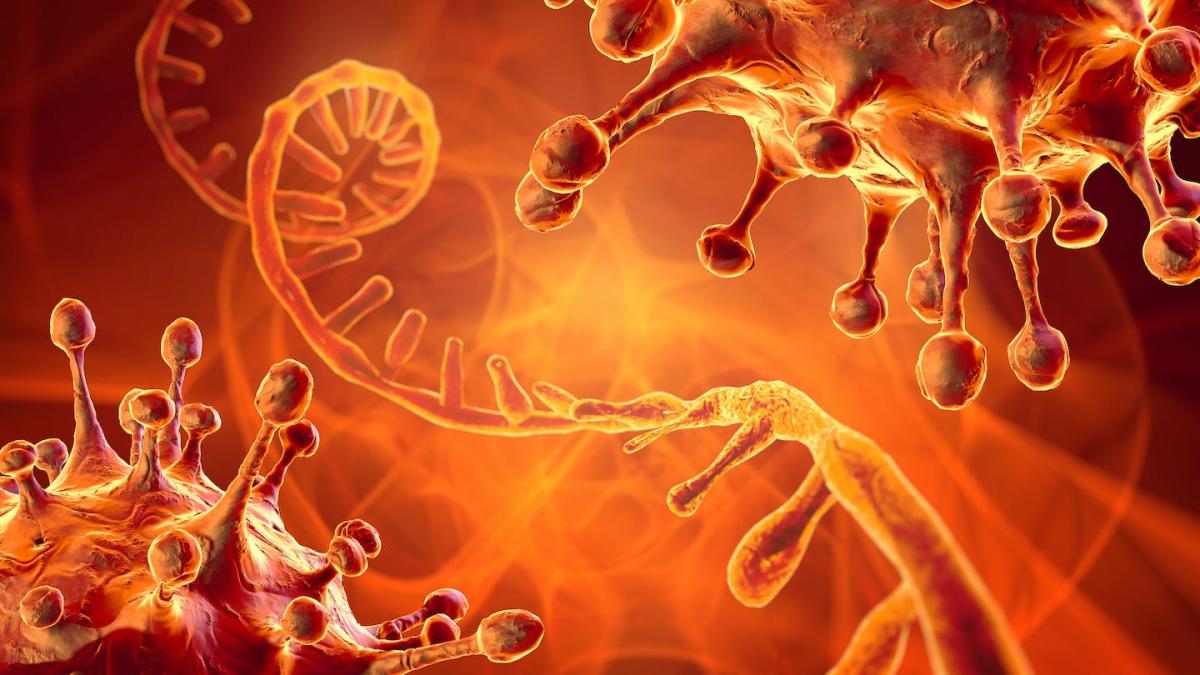HTML
How Your Immune System Synthesizes Its Own Antiviral Molecules
Antiviral drugs have long been attributed to the realm of modern science, but recent research reveals a fascinating aspect of your immune system: its ability to produce its own antiviral compounds in response to viral infections. In my laboratory, we investigate a specific protein that plays a key role in synthesizing these natural antiviral molecules. Contrary to popular belief, nature has equipped cells with the capacity to create their own “drugs” as an initial defense against viruses.
Antiviral Mechanism
Viruses rely entirely on the cells they infect to supply the necessary chemical components for their replication. Once inside a cell, the virus takes control of its machinery and transforms it into a production line for hundreds of new viruses. Antiviral drugs work by targeting proteins essential to the virus’s functioning, capitalizing on the fundamental disparities in the replication processes of cells and viruses.
One crucial distinction between cells and most viruses lies in how they store genetic information. While cells use DNA as the storage medium, viruses opt for RNA. RNA, like DNA, consists of a chain of four chemical letters, but with slightly different molecular structures. Unlike DNA, RNA is single-stranded. Additionally, viral genomes are significantly smaller than cellular genomes.
During replication, a virus utilizes an enzyme called RNA polymerase to generate multiple copies of its RNA genome. The polymerase begins at one end of the existing RNA chain and sequentially “reads” the chemical letters, selecting the appropriate building blocks and adding them to the growing RNA strand. This process continues until the entire sequence is copied.
A specific class of antiviral drugs disrupts the RNA copying process in a clever manner. RNA chains are constructed in a head-to-tail fashion and require each chemical letter to have two connection points – a head to attach to the previous letter and a tail to allow for the addition of the next letter. These antivirals imitate one of the chemical letters but lack the tail connection point. If the RNA polymerase mistakes the drug for the intended letter and adds it to the growing RNA chain, the replication halts because there is no attachment point for the subsequent letter. Hence, this type of antiviral drug is known as a chain-terminating inhibitor.
Viperin: The Antiviral Producer
Formerly believed to be a product of human ingenuity, chain-terminating antivirals have now been discovered to originate from a protein called viperin, present in your cells. Viperin chemically eliminates the tail connection point from one of the RNA building blocks in a virus’s genome, transforming it into a chain-terminating antiviral drug.
This strategy has proven highly effective in combating viral infections, as exemplified by the COVID-19 antiviral remdesivir. While a viral RNA polymerase must join together thousands of letters to copy a virus’s genome, an antiviral drug only needs to deceive it once to interrupt the process. An incomplete genome lacks the necessary instructions to develop a new virus, rendering it useless. Moreover, these chain-terminating antiviral drugs selectively inhibit viral replication without significant impact on cellular replication, minimizing unwanted side effects.
It is important to note that viperin does not provide complete protection against all RNA viruses, as some viral RNA polymerases have evolved to recognize and counteract the antiviral molecules produced by viperin. However, viperin is only one component of your immune system, which employs specialized cells and proteins to defend against infections in various ways.
Ancient Origins of Antivirals
Viperin was first discovered approximately two decades ago during the search for genes activated in response to viral infections. Understanding the precise function of viperin posed a significant challenge. Its resemblance to a group of ancient proteins known as radical SAM enzymes found in bacteria and molds added to the mystery. Radical SAM enzymes are exceptionally rare in animals and are easily inactivated in the presence of air, leading researchers to believe they were ineffective in humans. The mechanisms by which viperin avoids inactivation remain unclear.
Researchers began unraveling the role of viperin when they noticed its proximity to a gene involved in synthesizing an RNA building block. This observation prompted further investigations into whether viperin modifies this particular building block.
Subsequent discoveries revealed the presence of viperin-like proteins across all domains of life, from ancient bacteria to modern plants and animals. This suggests that viperin is an ancient protein that emerged early in the evolutionary timeline, possibly predating multicellular organisms, as even bacteria must combat viral infections. As complex life forms evolved, viperin was retained and integrated into the sophisticated immune systems of modern animals. Thus, this recently discovered facet of your immune system represents the most ancient defense against viral threats.
Note: This article was originally published on The Conversation and written by Neil Marsh from the University of Michigan. The content has been modified for improved readability and SEO optimization.


